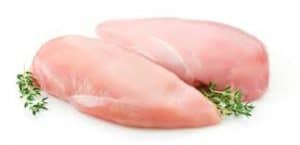 I spend an inordinate amount of time seeking recipes for that workhorse of the weeknight meal, the boneless, skinless chicken breast. But let’s face it, we could all overdose on chicken breasts. In a writing class I took before launching Chewing The Fat, one of my classmates tossed around the idea of basing her blog entirely around that particular piece of protein. I think she was actually thinking of calling the blog “BSCB”. When she introduced her partner to the idea, he threatened to leave her envisioning seven nights a week of boneless, skinless chicken breasts. So she abandoned the idea. My search is not out of some passion for chicken breasts, but they’re healthy as all get out and never take much time to cook.
I spend an inordinate amount of time seeking recipes for that workhorse of the weeknight meal, the boneless, skinless chicken breast. But let’s face it, we could all overdose on chicken breasts. In a writing class I took before launching Chewing The Fat, one of my classmates tossed around the idea of basing her blog entirely around that particular piece of protein. I think she was actually thinking of calling the blog “BSCB”. When she introduced her partner to the idea, he threatened to leave her envisioning seven nights a week of boneless, skinless chicken breasts. So she abandoned the idea. My search is not out of some passion for chicken breasts, but they’re healthy as all get out and never take much time to cook.
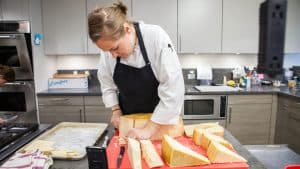
This recipe for Chicken Florentine came from a writer called Alli Berkey in Cook’s Country magazine. Ms. Berkey claims that Chicken Florentine is a well-known at buffets where it is either stuffed into breasts like Chicken Cordon Bleu or stacked on top of them. I have never encountered this dish at a buffet but that may be because I loathe buffets and avoid them at almost all costs. However, Ms. Berkey’s recipe fit the bill for ease, speed and I’d never seen any recipe remotely like it, always a good thing when you’ve already written 15 posts about boneless skinless chicken breasts. There was even a little side story of the kind I love to tell: the origin of “Florentine”.

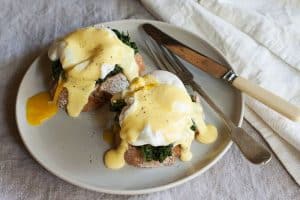 “Florentine” is most famously attached Eggs Florentine but there’s also Sole Florentine, Quiche Florentine and Florentine cookies. All of these dishes have one thing in common. They do not come from Florence, Italy although one particular Italian may be responsible for them all. They are all French dishes and they are linked to a 14-year-old girl, Catherine de Medici. In 1533 Catherine, great granddaughter of the Renaissance ruler of Florence, Lorenzo the Magnificent, married France’s King, Henry II. Catherine was accompanied to France by a retinue including Florentine cooks. Those cooks are credited with creating dishes from crepes to onion soup to sorbet that are all part of the lexicon of French cuisine. But the term Florentine or à la Florentine is especially attached to dishes with spinach. In Catherine’s time, spinach was grown in gardens everywhere in Florence. Spinach had an ancient history having been brought by Arabs to Sicily 700 years before Catherine’s birth. It thrived in Italy, Spain and elsewhere around the Mediterranean. It was said to be Catherine’s favorite vegetable and one story claims that she insisted on being served spinach at every one of her meals. Considering that the Florentine cooking method for spinach was to simmer it in melted butter, she may have been on to something.
“Florentine” is most famously attached Eggs Florentine but there’s also Sole Florentine, Quiche Florentine and Florentine cookies. All of these dishes have one thing in common. They do not come from Florence, Italy although one particular Italian may be responsible for them all. They are all French dishes and they are linked to a 14-year-old girl, Catherine de Medici. In 1533 Catherine, great granddaughter of the Renaissance ruler of Florence, Lorenzo the Magnificent, married France’s King, Henry II. Catherine was accompanied to France by a retinue including Florentine cooks. Those cooks are credited with creating dishes from crepes to onion soup to sorbet that are all part of the lexicon of French cuisine. But the term Florentine or à la Florentine is especially attached to dishes with spinach. In Catherine’s time, spinach was grown in gardens everywhere in Florence. Spinach had an ancient history having been brought by Arabs to Sicily 700 years before Catherine’s birth. It thrived in Italy, Spain and elsewhere around the Mediterranean. It was said to be Catherine’s favorite vegetable and one story claims that she insisted on being served spinach at every one of her meals. Considering that the Florentine cooking method for spinach was to simmer it in melted butter, she may have been on to something.
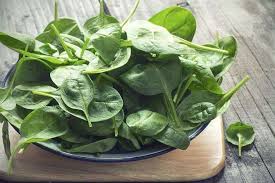 Today’s recipe starts with quickly sautéing baby spinach with a little oil and salt. Then two chicken breasts, which have been pounded to a half inch thickness are cooked in the same skillet as the spinach until they achieve a golden-brown color. They are set aside while a simple sauce of chicken stock and heavy cream is added to quickly cooked shallots and garlic. The sauce is reduced by half, two tablespoons of parmesan cheese are added and then, for a bright note both lemon zest and lemon juice finish the sauce. The spinach is stirred into the sauce, and the chicken is then topped with it and another couple of tablespoons for parmesan. Here is the recipe.
Today’s recipe starts with quickly sautéing baby spinach with a little oil and salt. Then two chicken breasts, which have been pounded to a half inch thickness are cooked in the same skillet as the spinach until they achieve a golden-brown color. They are set aside while a simple sauce of chicken stock and heavy cream is added to quickly cooked shallots and garlic. The sauce is reduced by half, two tablespoons of parmesan cheese are added and then, for a bright note both lemon zest and lemon juice finish the sauce. The spinach is stirred into the sauce, and the chicken is then topped with it and another couple of tablespoons for parmesan. Here is the recipe.
Chicken Florentine
Spinach in a luscious creamy Parmesan sauce tops golden-brown boneless, skinless chicken breasts
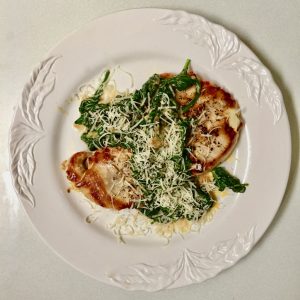
Ingredients
- 2 (6 to 8 ounce) boneless, skinless chicken breasts
- 2 Tbs canola oil
- 6 oz (6 cups) baby spinach
- 1 shallot, minced
- 1 clove garlic, minced
- 1/2 cup chicken broth
- 1/2 cup heavy cream
- ¼ cup freshly grated Parmesan cheese
- 1/2 tsp lemon zest
- 1 tsp. Lemon juice
Directions
- Step 1 Place chicken between two sheets of plastic wrap and pound the chicken to ½ inch thickness. Pat chicken dry with paper towel and season well with salt and pepper.
- Step 2 Heat 1 tablespoon of the oil in a 12-inch skillet over medium-high heat. Add the spinach, ¼ tsp. of salt and cook, stirring often, until wilted, 1 to 2 minutes. Transfer the spinach to a colander set in sink allowing any excess liquid to drain off. Wipe skillet clean with paper towel.
- Step 3 Heat the remaining tablespoon of oil in the now-empty skillet over medium-high heat. Add the chicken and cook 3-4 minutes per side, until golden brown. Remove from pan to a plate and tent with aluminium foil.
- Step 4 Add shallot and garlic to the pan and cook about 1 minute, or until fragrant. Stir in the broth and cream. Cook until reduced to about 2/3 cup, about 7 minutes. Off heat, stir in 2 tbsp. Parmesan and the lemon zest and juice.
- Step 5 Transfer the chicken to individual plates and stir any accumulated juices into sauce. Season the sauce with salt and pepper to taste. Stir spinach into sauce to warm through. Top the chicken with spinach and sauce and sprinkle with remaining 2 tbsp. Parmesan. Serve.
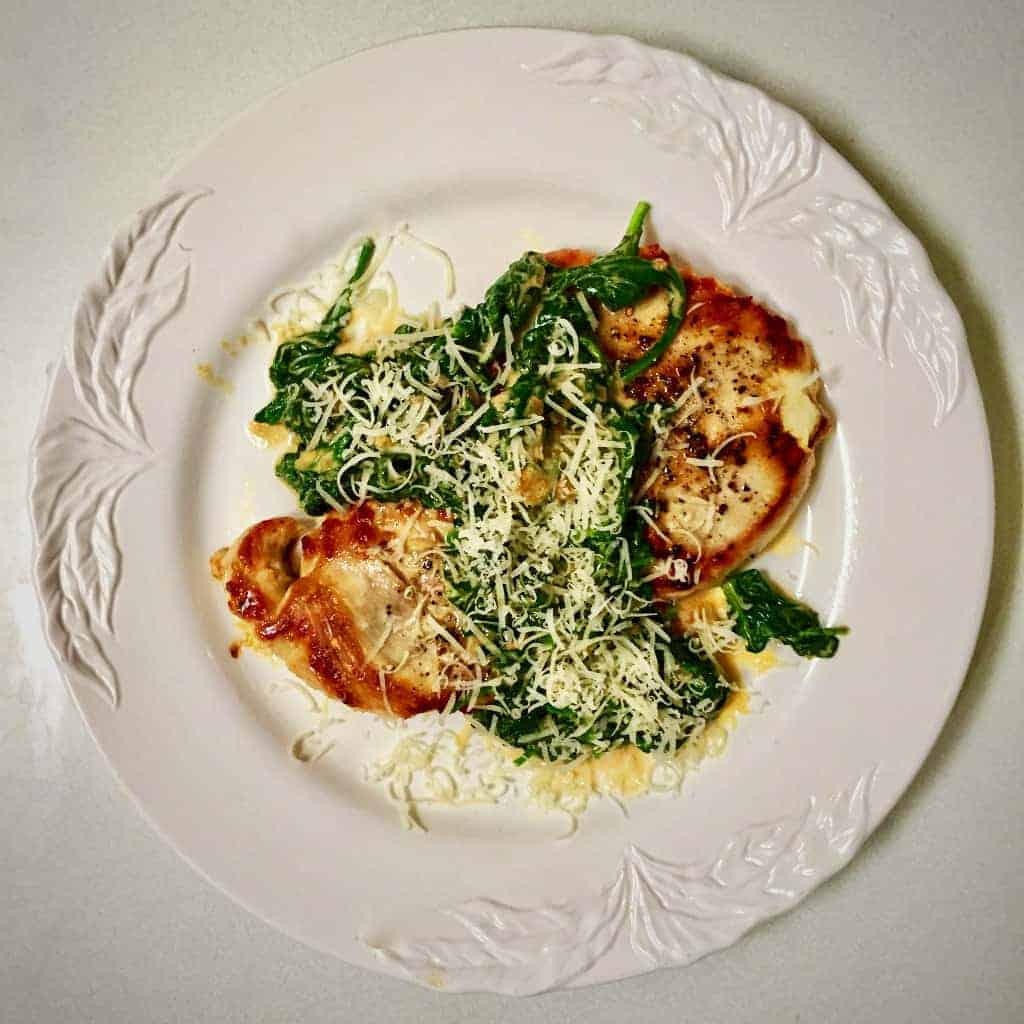











Monte,
I tried this recipe the other night and I have to say it was FANTASTIC! I was looking for something different for dinner one night and this recipe popped up in my inbox. I thought why not? So glad I tried it and for sure will be making it again. Thanks again for this wonderful blog!!!!!
Marcy
Dear Marcy, You can’t imagine how much it means to me that people really use these recipes. And it’s especially meaningful when it’s someone dear like you. Thank you so much for writing, that too makes me so very grateful for friends like you. XOXO
I too totally enjoyed this recipe. I subbed coconut cream for the heavy cream because my boyfriend doesn’t eat dairy and it came out perfect! It was a snap to make also. Thank you so much.
So pleased to hear that Marry and I hope you’ll come back for more? Have you subscribed yet? All best, Monte
Don’t know how I came across your blog…it doesn’t matter. Made this tonight and we loved it along with other recipes you’ve posted. Thanks!
Dear Carol, I can’t thank you enough for taking the time to write. I am so glad you found the blog and I hope you will find lots of ways to bring pleasure to your table. Bon Appetit!